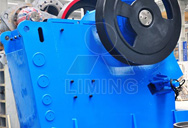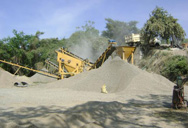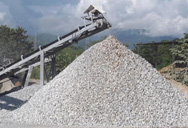


2015-9-7 reported on recovery of molybdenum from copper slags via hydrometallurgical processes. However, roasting of low grade molybdenum concentrate with lime or soda ash has been proposed to convert molybdenum to molybdate [9, 10, 11], and roasting of spent catalysts with soda ash has also been investigated for recovering soluble molybdate [12]. Thus, the
Read More
2019-12-1 The recovery percentage of molybdenum is low at lower values of cationic polyelectrolytes. On the other hands, phase separation is not possible at values higher than the threshold concentration; in order to investigate the recovery efficiency of precipitated molybdenum based on used polyelectrolyte, the efficiency factor was defined.
Read More
2018-9-1 An acidic solution containing the molybdenum(VI) was significantly recovered using Cyanex 301, dissolved in kerosene (Saberyan et al., 2003). Sastre et al. (2000) demonstrated the extraction of Mo(VI) from the sulfate solution using oxime extractant such as LIX 622, in which the extraction was carried out as the function of pH, different stripping reagents, time, temperature and extractant concentration.
Read More
The bioleach solution may be subjected to a separation step to produce solids and solution, and the molybdenum is recovered from the solution in any appropriate way. For example, molybdenum is recovered by using precipitation, ion exchange, solvent extraction and/or an electrowinning process.
Read More
2014-5-1 A pure form of molybdenum trioxide product (MoO 3) was recovered from the stripped solution by precipitation followed by drying and thermal decomposition
Read More
Molybdenum is recovered from dilute, ammoniacal, molybdenum containing solutions by adding ferrous ions to the solution to precipitate an iron hydroxide-ammonium molybdate complex. The precipitate is separated from the aqueous raffinate and is treated with acid to resolubilize the molybdenum
Read More
The specification describes a method of recovering molybdenum from molybdenum containing ore wherein the ore is subjected to the conventional process steps of concentrating, roasting, and ammonia leaching followed by novel procedures to remove the copper from the leach solution without the necessity of adding an agent to precipitate the contaminant copper.
Read More
2011-1-1 The recovery process was carried out in two key steps such as: (i) Solvent extraction of molybdenum from the leach liquor using Alamine 304-1 dissolved in kerosene and (ii) Preparation of MoO 3 from stripped solution by crystallization followed by thermal decomposition of
Read More
The invention provides a process for recovering molybdenum from a solid mixture containing molybdenum in the oxide form or in the form of molybdic ions and other metallic compounds, characterized in that said mixture is contacted with an aqueous solution of alkali metal hydroxide to solubilize molybdenum in the form of an alkali metal molybdate, the solid residue obtained is filtered off, the aqueous solution
Read More
2017-7-10 The objective of this study is to develop a method to maximize the recovery tungsten and molybdenum from a low-grade scheelite via a new acid leaching process followed by solvent extraction. Under optimal conditions (350 g/L H2SO4, 95°C, and 2 h), approximately 99.8% of tungsten and 98% of molybdenum were leached out.
Read More
2021-6-1 low content of molybdenum † Only applicable for recovery and purification purposes in the solutions containing target element as anion and impurities as cations and vice versa (using cationic or anionic polyelectrolytes) H. Shalchian, et al. Hydrometallurgy 190 (2019) 105167 2
Read More
OSTI.GOV Patent: Recovery of molybdenum from spent catalyst solutions from hydroperoxide epoxidations
Read More
F. separating the gypsum from the aqueous molybdenum containing solution produced in step E; and, G. extracting molybdenum values as molybdate ions from the aqueous molybdenum containing solution resulting from step F with an anion extractant. 8. The process as set forth in claim 7 wherein the iron is precipitated in step D by air oxidation. 9.
Read More
Recovery of molybdenum from a solid mixture, ... To determine the molybdenum content of the solutions obtained according to the present invention, there was used the titration method with solutions having a known content of sodium hydroxide. ... there are recovered 1500 ml of a sodium molybdate solution containing 178.1 g of molybdenum.
Read More
OSTI.GOV Patent: Recovery of molybdenum from molybdenum disulfide. Recovery of molybdenum from molybdenum disulfide. Full Record; Other Related Research
Read More
2017-7-10 With most high-quality tungsten ores being exhausted, the enhancement of low-grade scheelite concentrates processing has attracted a great deal of attention. The objective of this study is to develop a method to maximize the recovery tungsten and molybdenum from a low-grade scheelite via a new acid leaching process followed by solvent extraction. Under optimal conditions (350 g/L H2SO4,
Read More
1992-3-31 The U.S. Department of Energy's Office of Scientific and Technical Information
Read More
2020-12-2 Composite catalysts containing molybdenum are mostly used for the purpose of hydrogenation in the oil refining industries. These treatment processes leave behind a large amount of used catalyst. These worn-out catalysts can be a secondary source of metal recovery for molybdenum and increase environmental awareness. In this paper, molybdenum recovery from worn-out catalysts
Read More
2020-11-4 metals Article Selective Recovery of Molybdenum over Rhenium from Molybdenite Flue Dust Leaching Solution Using PC88A Extractant Ali Entezari-Zarandi 1,2,*, Dariush Azizi 1,3, Pavel Anatolyevich Nikolaychuk 4, Faïçal Larachi 1 and Louis-César Pasquier 3 1 Department of Chemical Engineering, Université Laval, Québec, QC G1V 0A6, Canada; [email protected] (D.A.);
Read More
a highly pure ammonium molybdate solution is obtained from an impure molybdenum source by a process that comprises digesting the molybdenum source in an aqueous solution of an alkali metal hydroxide, adjusting the ph of the resulting solution to from about 1 to about 4 to form an aqueous feed solution, contacting the aqueous feed solution with an organic extractant solution consisting ...
Read More
2021-6-1 low content of molybdenum † Only applicable for recovery and purification purposes in the solutions containing target element as anion and impurities as cations and vice versa (using cationic or anionic polyelectrolytes) H. Shalchian, et al. Hydrometallurgy 190 (2019) 105167 2
Read More
OSTI.GOV Patent: Recovery of molybdenum from spent catalyst solutions from hydroperoxide epoxidations
Read More
Particle size of catalyst (less than 100, 150, 200, 250 and more than 250 μm or (300 μm) was used. Operating conditions (recovery temperature, solution concentration and recovery time) were fixed from previous sections. Fig. 4. shown that the recovery of molybdenum was increased as
Read More
2020-12-2 Composite catalysts containing molybdenum are mostly used for the purpose of hydrogenation in the oil refining industries. These treatment processes leave behind a large amount of used catalyst. These worn-out catalysts can be a secondary source of metal recovery for molybdenum and increase environmental awareness. In this paper, molybdenum recovery from worn-out catalysts
Read More
Completely selective molybdenum extraction is therefore only possible from solutions containing no carbonate. The removal of the carbonate produced adverse side effects for the sodium hypochlorite lixiviant as a result of copper hydroxide formation on the mineral surface which led to rapid decomposition of the hypochlorite by heterogeneous ...
Read More
OSTI.GOV Patent: Process for the separation and recovery of molybdenum and uranium from leach solution using ion exchange
Read More
2017-5-22 Molybdenum-rhenium extraction was unaffected by presence of chalcopyrite in the molybdenite concentrate; however, molybdenum extraction declines if the copper content, as chalcocite, exceeds 7 pct. High-purity molybdenum and rhenium
Read More
2014-6-19 Parameters such as temperature, time, and NaOH solution concentration have been studied thoroughly, in order to settle the appropriate conditions for the maximum recovery of molybdenum and vanadium. Under the best leaching conditions (20% w NaOH, room temperature, 2 h) about 95% recovery of Mo and V was achieved, and the recovery of nickel ...
Read More
2020-11-27 1.2 molybdenum enrichment and transformation Low-grade molybdenum mineral decomposition solution is characterized by the molybdenum concentration is not high, and the corresponding high impurity content, in order to effectively recover the molybdenum
Read More
2021-1-6 Treatment costs for water containing 4 ppm Mo was 57 cents per 1,000 gal. Treating 20 pct of the waste water and recycling the remainder could raise the molybdenum concentration in the waste water to about 10 ppm. This operation was
Read More
